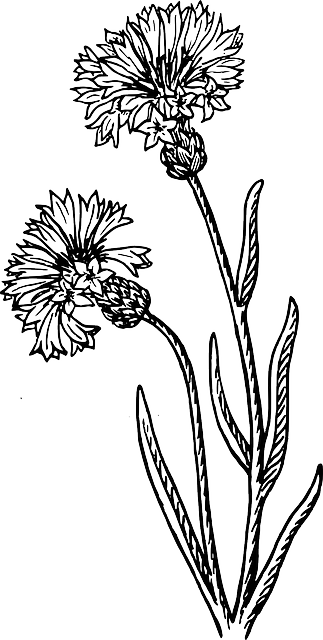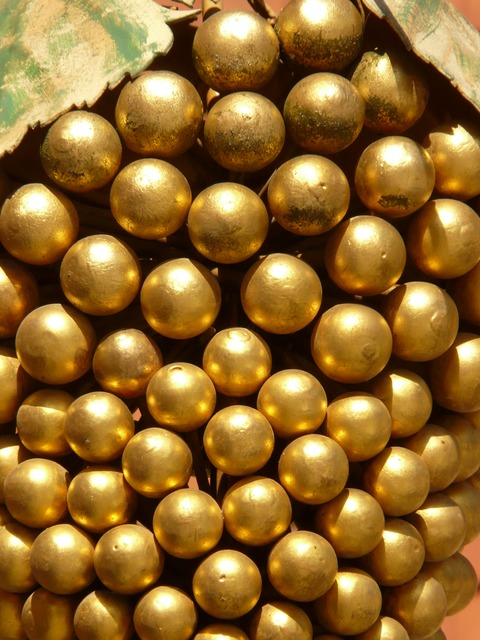إمارة جبل لبنان
إمارة جبل لبنان was an autonomous subdivision في الدولة العثمانية. The Emirate is considered to be an historical precursor of the متصرفية جبل لبنان established in 1861, which was, in turn, the precursor of the الجمهورية اللبنانية الحالية. Historians have given different names to this entity: إمارة الشوف, إمارة جبل الدروز، إمارة جبل لبنان، as well as إمارة معن. The boundaries were not well defined. The town of بعقلين was the capital of the emirate during the Ma'an period until فخر الدين الثاني chose to live in دير القمر due to a water shortage في بعقلين. وظل دير القمر العاصمة حتى بشير شهاب الثاني ascended to the throne and made بيت الدين the capital. Beiteddine remains the capital of the قضاء الشوف today.
Fakhr-al-Din II, the Druze prince and Lebanon's most prominent leader, was a strongman who was given leeway by the Ottomans to subdue and destroy other provincial leaderships in Ottoman Syria on their behalf, and who was himself destroyed in the end, to make way for a firmer control by the Ottoman state over the Syrian eyalets. The 'emir' was thus the dominant warlord in the Lebanese mountains.
Fakhr al-Din established a subtle symbiosis between the Maronites of Kisrawan and the Druzes of the Shuf mountains. After his downfall, the Ottomans tried different ways to break up this symbiosis, but all efforts failed. In the end, they returned power to the Maans in the person of Ahmad al-Maani, the grandnephew of Fakhr al-Din, in 1667.
The Maan and Shihab government of different parts of Mount Lebanon, between 1667 and 1841, was an Ottoman iltizam, or tax farm, rather than a dynastic principality, and the multazims were never reigning princes. The relations between the Porte and the Shihab emirs revolved around the payment of taxes, and the official legitimation of their position as multazims. Such was the precariousness of their position that over the more than three centuries of the two dynasties (1516–1840) only two significantly strong leaders emerged, Fakhr-Al-Din I (1516–1544) and his grandson Fakhr al-Din II (1591–1635). Bashir Shihab II (1788–1840) was also an important prince but he was viewed as a tyrant at the period rather than a leader. That led to the 1840 revolution against Bashir and his Egyptian allies .
الأسرة المعنية
The Ma‘ans came to power in the early 16th century, and both Fakhr al-Din I and Fakhr al-Din II greatly expanded the territory of the original Imarat al-Shuf while acting as the principal local tax farmer (multazim) for the Ottoman state.
فخر الدين الأول (1516–1544)
Fakhr al-Din I (1516–1544), was supposedly awarded with the emirate of the Shuf after fighting on the side of Selim I at the Battle of Marj Dabiq. In any case, he emerged soon afterwards as a local force, and was the first member of the Ma'an dynasty to serve the Ottomans.
قرقماز (1544–1585)
Fakhr al-Din was succeeded by his son قرقماز, who was involved in frequent conflicts both with his neighbours and with the Ottomans, as the tax-farming system involved constant power struggles.
فخر الدين الثاني (1591–1635)
Fakhr-al-Din II (1591–1635) was the most renowned of the Maanid rulers, although his position was as precarious as that of his predecessors and his successors.
الأمراء اللاحقون
The dynasty continued, greatly weakened, until the death of Ahmad (reigned 1658–1697) when its functions were taken over by the Shihab family.
الأسرة الشهابية
حيدر الشهاب (1697–1732)
Haydar was a Sunni, though his mother was a Druze from the Maan clan. He spent the next decade trying to win the support of various Druze and Shia clans in southern and central Lebanon. His rivals called in help from the Ottomans in 1711, but before the Ottoman expeditionary force could arrive, Haydar defeated his local rivals at the Battle of Andara and seized the former Mann capital of Deir el Qamar.
Through intermarriage, Haydar effected an alliance with two powerful Druze groups, the Abu-Lamma family and the Janbulad Family. That alliance lasted for most of the 18th century.
ملحم الشهاب (1732–1753)
Milhim al-Shihab succeeded Haydar in 1732. Milhim repeatedly succeeded in avoiding the payment of the regular amount of taxes to the Ottoman authorities, and in 1748 the governor of Damascus launched a punitive expedition against him.
In the 1750s, Milhim attempted to acquire a firman confirming his authority over the Shuf and that of his nephew Quasim over Byblios, but the attempt failed, as the political climate in Istanbul changed after the death of Sultan Osman III in 1757.
After his abdication in 1753, the administration was run by Mansur and Ahmad al-Shihab for several years (1753–1763), and then by Qasim al-Shihab. A power struggle ensued, and in the 1760s Yusuf al-Shihab emerged as administrator of the Shuf.
يوسف الشهاب (1770–1788)
Yusuf, son of Mulhim, gained the title of emir in 1770. It is not clear whether or not Yusuf converted to Christianity, as he participated in both Muslim and Christian religious services and visited Druze and Christian shrines. During this period, the Lebanese mountains were relatively quiet, although feuds between individual families still frequently flared into violence. The status quo was shattered with the Mamluk invasion of Syria in 1770. Yusuf al-Shihab aided the Mamluks and his troops even briefly occupied Damascus. But in the aftermath of the Mamluk withdrawal, Sultan Mustafa III appointed Cezzar Ahmed Pasha to the governorship of Sidon. From his stronghold in Acre, Cezzar Ahmed steadily acquired territories that had been held by vassals of the Shihab clan.
In 1789, when there was an attempted coup against Cezzar Ahmed, he became convinced that Yusuf al-Shihab was behind it. In reprisal, he moved his army into Lebanon where he defeated the Shihabs in a battle in the Bekaa Valley. In defeat, Yusuf abdicated, and his vassals then chose his cousin Bashir.
بشير شهاب الثاني (1788–1841)
Bashir (usually referred to as Bashir II to distinguish him from Haydar's father) was emir until 1841, making him the longest-reigning emir of the Lebanese mountains. He was viewed as a tyrant at the time. In this period, Lebanon suffered from two famines. Also, Bashir destroyed everything that Fakhreddine had tried to establish: a strong Lebanon where all communities live in peace and harmony together. He made the Emirate weak because Mount-Lebanon and his prince were under the rule of the Jezzar of Acre and the Wali of Sidon, whereas it was exactly the opposite during Fakhreddine's reign. Also, he was the first leader that tried to split the Lebanese by establishing a policy consisting of religious discrimination. Bashir openly acknowledged that he was a Christian, marking a transition by which Maronites displaced the Druzes as the main power in the Lebanese Mountains. The Abi-Lamma clan, a Druze family who was a close ally of the Shihabs, also became Christians around the same time. After the death of Cezzar Ahmed in 1804, Bashir II moved to destroy' the feudal families his predecessors had relied upon as allies.
When Ibrahim Pasha moved his army into Syria in 1831, Bashir II offered his allegiance to the Egyptian forces and was granted extensive authority over much of Lebanon. He used his power to extract extra taxes and to impose military conscription, extremely unpopular measures that led to wide-scale revolts by Druze and Christian peasants. After the withdrawal of the Egyptian army in 1840, Bashir II surrendered to the British fleet anchored off Beirut and went into exile.
بشير شهاب الثالث (1841)
After Bashir II went into exile, the Ottoman sultan appointed Bashir III, Bashir II's distant cousin, as emir in 1841, but it was not it popular choice. Not long after his appointment the new emir called the principal Druze families to Deir el Qamar to discuss his tax policies. The families showed up armed and besieged him in his palace in October 1841. The stalemate ended when the sultan withdrew his appointment and Bashir III went into exile.
With that, the Shihab dynasty collapsed. There were attempts to restore Bashir III as Emir after the civil unrest in Lebanon in 1861, but they were unsuccessful.
التقسيم 1840–1860
In the mid-1840s, the population of the Emirate was estimated at around 300,000, of which less than 100,000 lived in "mixed districts".
| الأقضية | المسيحيون | الدروز | Muslims | |||
| Matn | 10,990 | 2,105 | 100 | |||
| عرقوب | 2,760 | 2,790 | - | |||
| Two Choufs | 4,290 | 8,695 | - | |||
| Two Gharbs | 3,675 | 3,940 | 40 | |||
| Jezzin | 5,330 | 65 | 560 | |||
| Jurd | 2,410 | 1,820 | 3,190 | |||
| Kharroub | 3,390 | 45 | - | |||
| Manassif | 1,195 | 1,695 | - | |||
| Shahhar | 3,970 | 1,050 | - | |||
| Sahil | 7,395 | 75 | 899 | |||
| Tuffah | 4,815 | 5 | 105 | |||
| Deir el-Qamar | 4,385 | 1,979 | ||||
| Total | 54,606 | 24,264 | 4,894 | |||
| 1844 estimates from M. Bouree to François Guizot, Paris, 30 July 1844. | ||||||
Following continued animosity and fighting between the Maronites and the Druze, representatives of the European powers proposed to Sultan Abdülmecid I that the Lebanon be partitioned into Christian and Druze sections. The Sublime Porte was finally compelled to relinquish its plans for the direct rule of the Lebanon, and on December 7, 1842, the sultan adopted prince Metternich's proposal and asked Assad Pasha, the governor (wali) of Beirut, to divide the Mount Lebanon, into two districts: a northern district under a Christian Kaymakam and a southern district under a Druze Kaymakam, both chosen among tribal leaders. Both officials were to report to the governor of Sidon, who resided in Beirut.
المراجع
- ^ خطأ استشهاد: وسم
<ref>غير سليم؛ لا نص تم توفيره للمراجع المسماةSalibi2003 - ^ Peter Sluglett; Stefan Weber (2010-07-12). . BRILL. p. 329. ISBN . Retrieved 2013-05-25.
- ^ خطأ استشهاد: وسم
<ref>غير سليم؛ لا نص تم توفيره للمراجع المسماةÁgostonMasters2009 - ^ R. Van Leeuwen (1994). . BRILL. pp. 54–56. ISBN . Retrieved 2013-05-26.
- ^ خطأ استشهاد: وسم
<ref>غير سليم؛ لا نص تم توفيره للمراجع المسماةSluglettWeber2010p21 -
^ ʻĀdil Ismāʻīl (1976). "Documents diplomatiques et consulaires relatifs à l'histoire du Liban: et des pays du Proche-Orient du XVIIo siècle à nos jours". 9. Èditions des oeuvres politiques et historiques: 175.
M. Bouree to François Guizot, Paris, 26 Dec 1847, "Les 338.426 âmes, deduction faite de la population attribute a ces cinq districts, se réduisent donc d’un trait de plume au chiffre de 277.263. La carte ci-jointe ne donne au meme territoire qu’une population de 193.935 âmes, qui se divide ainsi: 129.545 pour les districts chrétiens; 64.390 pour les districts mixies... L'auteur du travail auquel je fais allusion porte a 85.723 ames la population de ces districts mixtes."
-
^ ʻĀdil Ismāʻīl (1976). "Documents diplomatiques et consulaires relatifs à l'histoire du Liban: et des pays du Proche-Orient du XVIIo siècle à nos jours". 7. Èditions des oeuvres politiques et historiques: 402.
Il ya quatorze districts mixtes au Liban, comprenant celui de Deir el-Kamar. Voici les noms de ces districts et l’état comparatif des populations.
- ^ Lutsky, Vladimir Borisovich (1969). "Modern History of the Arab Countries". Progress Publishers. Retrieved 2009-11-12.
- ^ United States Library of Congress - Federal Research Division (2004). Lebanon A Country Study. Kessinger Publishing. p. 264. ISBN .
















